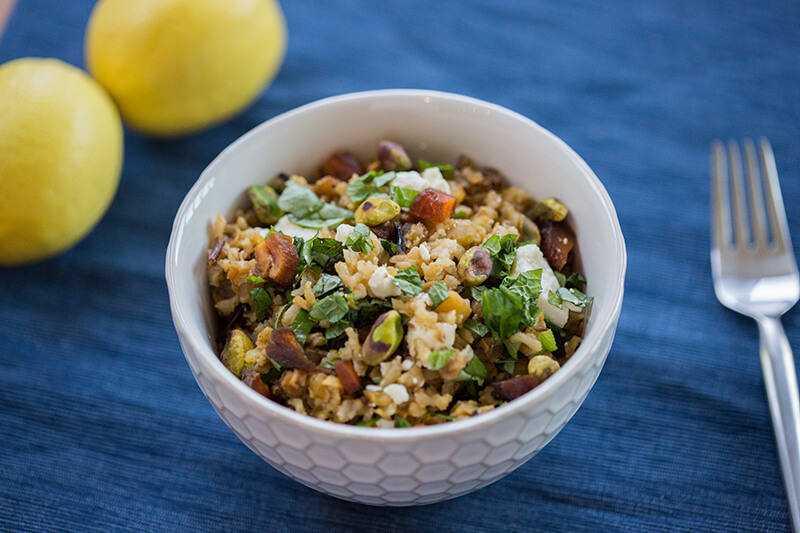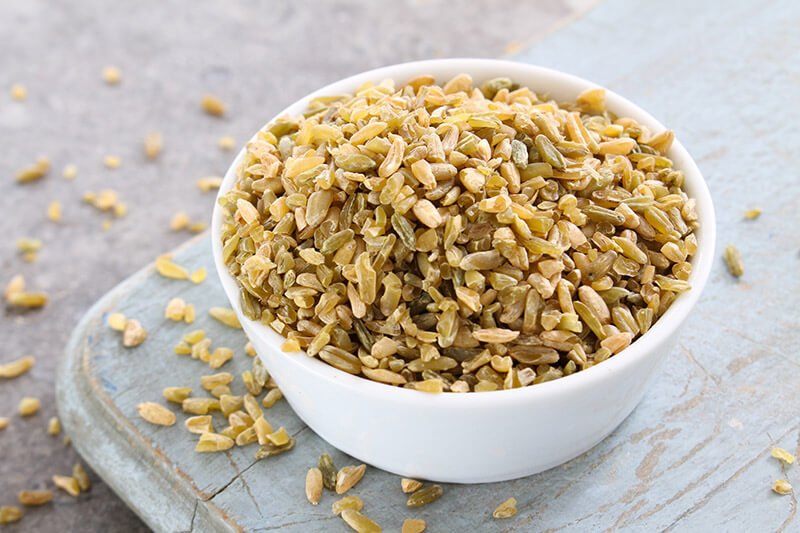
When I was younger, I never realized how amazing oats and oatmeal could be. It was probably because it brings back memories of going downstairs for breakfast before school and getting that same bowl of plain tasteless oatmeal. Every. Single. Day. However, that was the old me. I have recently discovered a whole world of oatmeal that I had no idea existed. To tell the truth, it really is the ultimate breakfast option: it’s filling and hearty, and yet it’s one of the healthiest meals you can eat. The trick is knowing your oats. There are many types of oats that can spice up your morning and provide you with kick-butt nutritional benefits that will boost you through the day.

What’s in that T’oat’ Bag?
Ah sorry, that was a cheesy one, but really, what kinds of oats are there? There are a handful of oats and ways to encounter them. You’ve likely encountered them all, but what’s the difference? A whole lot. Ranging from size, and consistency, to flavor and fiber/protein content, there’s a ton so take n’oats! (okay, I’ll stop now…) Let’s start with the whole oat grain. A whole grain contains three main parts of a seed: the endosperm, germ, and bran.
Oat Groats

Groats are the hulled kernels of cereal grains: in this case, oats. Groats are whole: they include the cereal germ, the bran, and the endosperm of the grain. They are very nutritious, but often require soaking prior to cooking, and remain somewhat chewy. They are best used in porridges and stews.
Oat Bran

Think: Oat Groat but without the germ, or the endosperm. It can be prepared very similarly to oatmeal, but will cook much faster (in about 3 minutes). Additionally, while it is nutritious, it is not a whole grain.
Instant Oats
 One of the most well known, Instant oats are the most processed of the three. These oats are pre-cooked, dried, rolled, and then pressed slightly thinner than rolled oats that aren’t labeled quick cooking. They cook faster than the others and have a more soft and mushy texture. They are super simple to prepare and dress up with spices and toppings, but beware it’s also very easy to overcook them. However, have no fear, because there are so many ways you can cook them, that you won’t have to worry about overcooking. There is even a recipe using these oats to make pancakes. Seriously Oatmeal Pancakes?! I know, shocking, but I assure you they are surprisingly delectable.
One of the most well known, Instant oats are the most processed of the three. These oats are pre-cooked, dried, rolled, and then pressed slightly thinner than rolled oats that aren’t labeled quick cooking. They cook faster than the others and have a more soft and mushy texture. They are super simple to prepare and dress up with spices and toppings, but beware it’s also very easy to overcook them. However, have no fear, because there are so many ways you can cook them, that you won’t have to worry about overcooking. There is even a recipe using these oats to make pancakes. Seriously Oatmeal Pancakes?! I know, shocking, but I assure you they are surprisingly delectable.
Nutritional value: 1/2 cup uncooked oats= 170 calories, 4 grams fiber, 6 grams protein
Rolled Oats

These oats are steamed as whole grains to soften and then pressed with steel rollers. Because they are rolled thinner, it cuts down cook time and gives them a more supple yet substantial texture. Unlike instant oats, they are able to hold their shape fairly well which prevents them from ending up a beige dish of mush. They are also the most commonly used in other exciting eats such as in cookies, muffins, breads, and more. There are a few types of rolled oats including old-fashioned oats and whole oats. (Old fashioned oats are rolled a tad thinner than whole oats.)
Nutritional Value: 1/2 cup rolled oats = 190 calories, 5 grams fiber, 7 grams protein
Steel Cut Oats

These oats are processed by chopping the whole grain up (or groat) into smaller pieces, not rolled. The shape and size of the oats make for a longer cook time (about 15-20 Minutes), and in the end, have a completely different taste and texture. They remain somewhat chewy and have a coarse and chunky consistency, making the eating experience much different than a bowl of rolled oats. Because of their composition, steel cut oats are often used in soups and stews to give texture, creaminess, and thickness. A few varieties of these oats are Irish or Scottish Oats.
Nutritional Value: 1/4 cup uncooked steel cut oats = 170 calories, 5 grams fiber, 7 grams protein
T’oat’ally Healthy!
Ha! You thought I was finished with the puns? Never! Oats are a complete powerhouse of health benefits. Their main attribute is fiber, which is known to lower cholesterol levels. Studies done by Harvard Health Publishing, have shown that fiber is associated with lowering the risk of heart disease by lowering blood cholesterol and helping control blood sugar levels. In addition, oats are complex carbs, meaning that they keep you feeling full for longer, and have almost twice as much protein as brown rice! Other important benefits include zinc, iron, thiamin, selenium, and magnesium. So jump on board the Oat Boat!
[P.S. always watch out for things in the ingredients that are added into the oats that can take away from their pure healthy state.]
What Can You do to Make Them More Exciting?
If you feel the need to make your oats more interesting, there are many ways you can spice it up! Adding toppings are always a good idea, try adding berries, honey, coconut shavings, nuts, raisins, peanut butter, etc. Or try mixing in spices as you cook your oats such as cinnamon, cloves, nutmeg or more! Have fun experimenting!




































